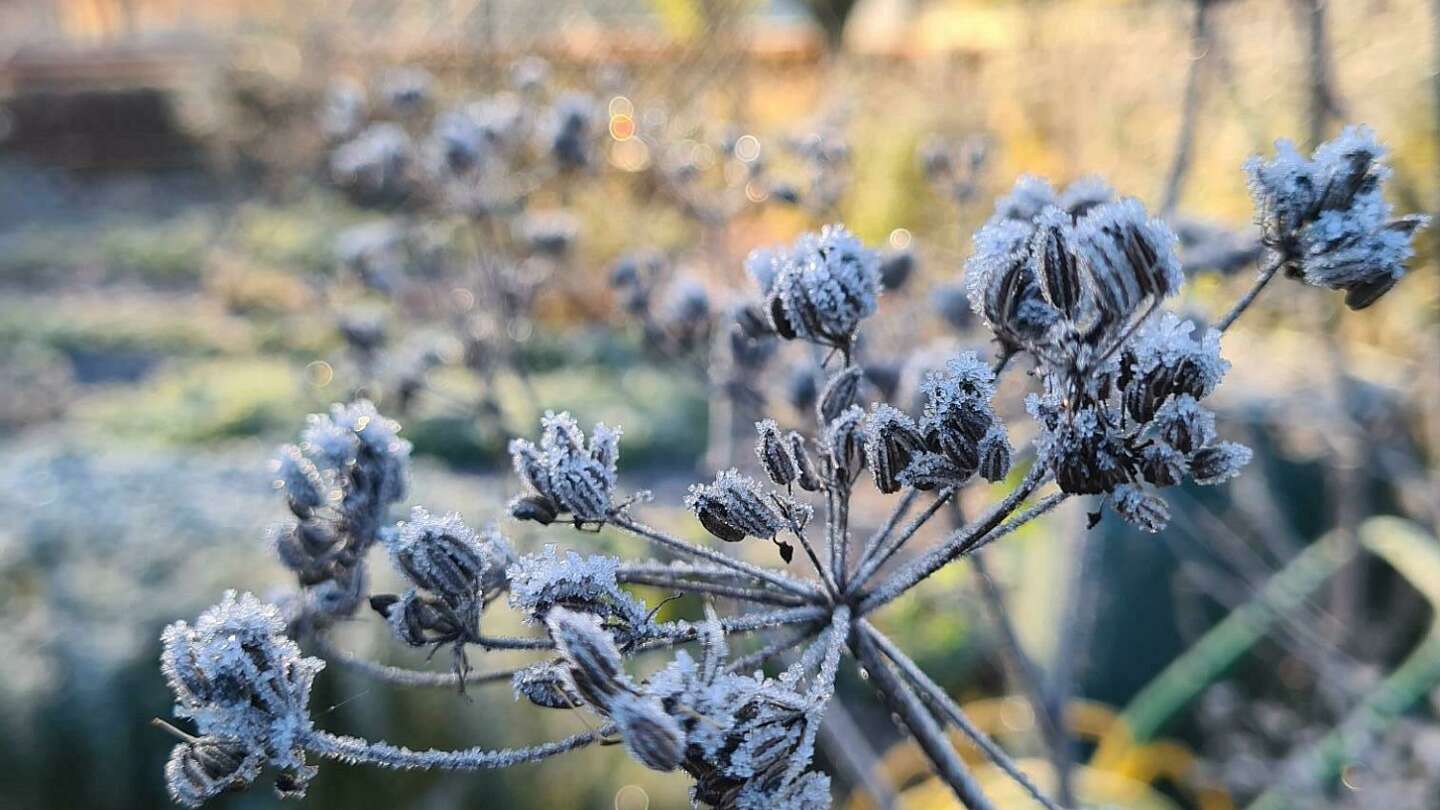Hold on to your heads

As plants fragment and colours crumble in autumn, it can be easy to think of the garden as a dead space. While you might ruthlessly deadhead to get more of what you like, such as colour and flowers, it’s easy to miss the papery treasures that follow.
But reframe this idea of decomposition as a ‘releasing’ or ‘resting’ and you may begin to look at seedheads in a different light. These forgotten flowerheads can add striking sculptural form to the blank winter canvas, as well as protecting your soil from the frosty weather. And importantly, you’ll also provide homes for hibernating insects and valuable food for finches, tits, and wrens.
Instead of bare earth and buzzcuts of stems, you and your garden wildlife will enjoy a fairground of whirling carousels, tufty candy floss and Ferris wheels. And with them come a myriad of natural crevices and cracks for wildlife to shelter in. And a rich source of protein and fats when normal food sources are scarce.
Artistry in accidents
Seed production is a valuable process for a plant, and they put a lot of energy into producing seeds. So, before you confine them to the compost heap, think about how you might incorporate more of these pods and particles into your garden.
The easiest place to start, is simply to stop tidying. While sappy plants will turn soggy after the first frost and require clearing, many other plants commonly grown for their blousy flowers, form beautiful embryos of seeds by just being left alone.
Some favourites include teasels (Dipsacus fullonum), which hold their statuesque bottlebrush heads all winter. As a biennial, you’ll need to sow in spring for flowers the following summer. It’s also a firm favourite of the goldfinch - the colourful birds are known as thistletuiges or ‘thistle tweakers’ for their specially shaped beaks that can extract the seeds. Bluetits and small mammals such as mice and voles will also forage for insects among the spines.
Sedums are often cut down to the base after flowering but are stunning topped with a freckle of ice crystals. Broad seedheads like these will also attract overwintering insects and spiders and become natural bird tables, complete with perches. The flowers of the purple coneflower (Echinacea purpurea) are also long lived and loved by bees and butterflies. During the winter they offer height and structure and provide a food source for birds, particularly finches.
And don’t forget about the stems. Standing stems will naturally house insects such as ladybirds and lacewings, as well as larvae and eggs.
Seedhead schedule
Savouring your seedheads doesn’t have to equal a messy garden. Some carefully chosen plants among more formal paths and shrubs can look very beautiful. And once you’ve witnessed a chiselled cone of echinacea glitter in the gloam, you’ll want to start choreographing your garden’s final encore.
Plant east to west so your stems catch the morning and late afternoon sun. And build combinations of textures for added impact by designing the garden with seedheads in mind.
One plant grown deliberately for its seeds rather than its flowers is biennial honesty (Lunaria annua). Sow in June for flowering the following spring and enjoy the moon-like paper discs from August. It looks lovely combined with whispering grasses such as feather reed grass (Calamagrostis x acutiflora) ‘Karl Foerster’, or the thimbles of eryngium. Bullfinches are also partial to honesty seeds.
Finish off by draping fences and walls in old man’s beard (Clematis vitalba). The whiskery seeds of this climber is a food source for several moth species. Birds use the fluff to line their nests.
Embracing edible forms
If you’ve ever let an allotment or veg bed go to seed, you’ll know vegetables also offer beautiful structures after flowering. When onions and leeks set seed, they produce floating globes on spikes that turn from blush to buff as they desiccate and give a strong vertical accent.
If you have the space, globe artichokes (Cynara scolymus) also keep their majestic stalks and heads well into winter. These statuesque plants can grow more than one metre, dying back in late autumn to resprout in spring. If left to flower, the large thistle-like flowers are loved by bees but the seedheads are also magnificent. The fluffy seedheads provide a downy bed for insects and a hunting ground for birds.
Loving your weeds
Weeds surely understand what it means to be marginalised in the garden. But many of them deserve a place in the winter border, and incorporating cultivated plants alongside these wilder gems increases your chances of attracting different kinds of wildlife.
Wild celery (Angelica archangelica) has large umbelliferous lime-green flowerheads with pink flushed stems and attracts all types of pollinators including ladybirds and lacewings. It adds height (around two metres) and architecture in autumn/winter and the delicate seeds that follow are popular with birds. Knapweed (Centaurea nigra), dubbed ‘hardheads’ for its tough pinecones, is lovely planted in drifts, and you’ll often see flocks of finches dancing on the heads.
Another often over-looked biennial is wild carrot (Daucus carota), which can be sown from March to May. The seedlings look like grass (so make sure you label them well) but they’ll produce lacy umbels the following year – hence the common name ‘Queen Anne’s lace’. From midsummer to autumn, you’ll be rewarded with extraordinary seedheads, with the flowers folding into themselves to form furry goblets. They make perfect high-rise spider homes.
Only when you see the green shoots at the bottom of your plants – and maybe a little bit after this - should you start to think about clearing your garden. Celebrating your seedheads is a great excuse for some low-maintenance gardening, and a foolproof way to bring texture and tone that would be missed in the frenzy of high summer.
Winter is often the forgotten season in the garden, but seedheads – and the wildlife they bring – can make it as transient and tantalising as the rest.